Make homemade blood orange marmalade to capture the bright citrus flavor and color of this gorgeous fruit! Preserving at home can be easy with this step by step process that I used from the Ball Blue Book of Preserving.
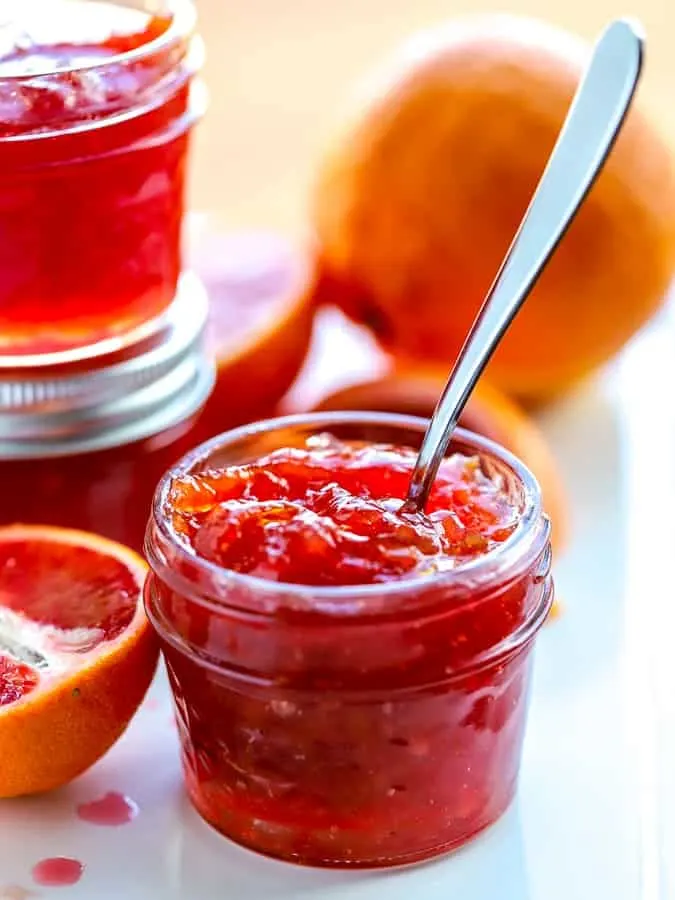
Blood oranges are a beautiful fruit. They are only available for a short time span each year so don’t miss your chance to preserve nature’s goodness! December usually marks the beginning of the season when grocery stores carry blood oranges. Are they available where you live now?
What are blood oranges?
Blood oranges are a special type of oranges named because of their deeply colored flesh. You might not know that you are looking at a blood orange as compared to a traditional orange just from the outside. It is quite a treat to slice into it and find a treasure of color inside!
Blood oranges have a sweeter taste than regular oranges. Their skin starts off orange and eventually, if left on the tree long enough, the peel turns more of a reddish color.
Inside the flesh of blood oranges is vibrant! Deep shades of orange, red, and pink similar to grapefruits. And oh, they are so flavorful!
Types of Blood Oranges
There are two main varieties of blood oranges sold in the United States: the Moro and the Taracco. Both are explained well in this post by the San Francisco Gate.
If you’d like to see a Moro orange tree and hear more about citrus trees, check out this video that shares information about Moro orange trees. The video is nearly 15 minutes long but I was captured by the idea of growing citrus trees at home!
As an Amazon Associate I earn from qualifying purchases.
Ball Blue Book of Preserving
I often turn to the Ball Blue Book of Preserving (affiliate link) to make jams and jellies. This time is no different. In fact, the steps I follow making blood orange marmalade are the same as I did for making orange lemon marmalade.
Lemons appear again in this recipe because I like the balance they provide to the flavor, but feel free to adjust the amount of each fruit as you wish.
Homemade preserves
Canning at home and making small batch jams and curds have really become a source of enjoyment for me in the kitchen. If you are interested in making more homemade preserves, here is a canning resource to give more more recipe ideas!
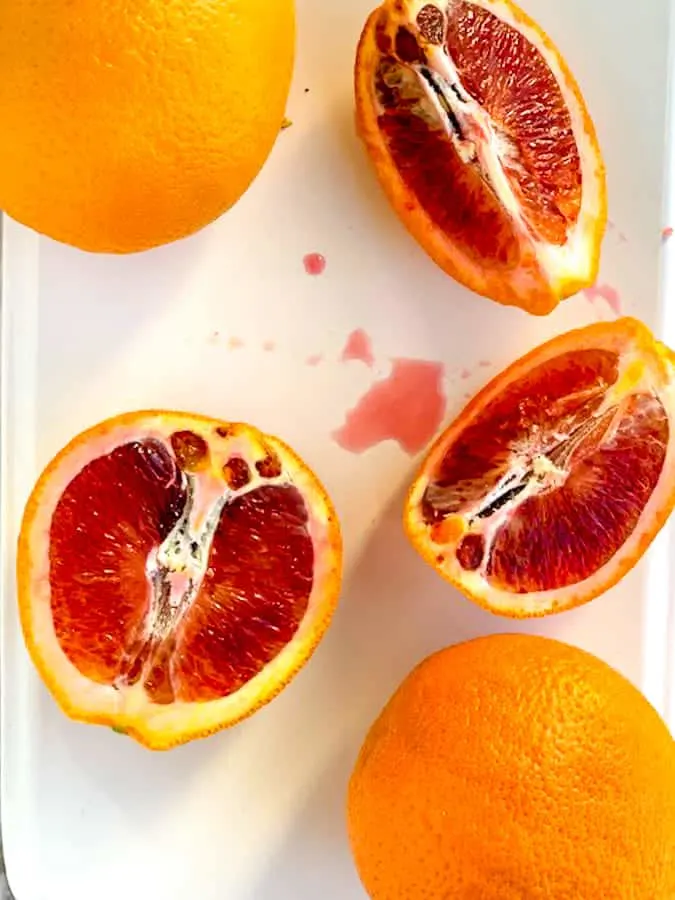
How to make Blood Orange Marmalade:
Making this marmalade is a two day process but don’t let that time span intimidate you. There is not a lot of hands-on time. You won’t be in the kitchen all day!
DAY ONE (about 30 minutes)
- Separate the peel from the pith. The pith is the white, bitter layer under the peel.
- Now slice the fruit and remove the seeds. Take off the layer of pith if it is thick. Set it aside with the seeds. Wrap the seeds and pith in the cheesecloth and secure tightly.
- Use a food processor to break down the blood oranges and lemons. Pulse until the mixture is in small bits.
- Place the water, all of the processed fruit, the peels, and the cheesecloth containing the pith and seeds into a large pot. Let this mixture sit overnight (not refrigerated).
DAY TWO (60-90 minutes)
- Bring the fruit mixture to a boil and cook for 20-30 minutes or until the peel is tender. Remove from the heat and discard the cheesecloth bundle.
- Add the sugar. Bring to a boil and stir until the sugar is dissolved. Cook the mixture until it reaches the gelling point.
- Ladle the hot marmalade into prepared jars, leaving 1/4 inch head space.
The cheesecloth bundle
Before we move on, let’s talk about this cheesecloth bundle.
It may look like an unnecessary step to zest the fruit, separate the pith (the white layer) from the flesh of the fruit, and to set aside the seeds out of the fruit, but these details are really important in helping your marmalade come to the right consistency. In other words, this step helps you reach the gelling point.
To reach the gelling point you need a substance called pectin. Fruits have varying amounts of pectin. In oranges and citrus fruits, the pectin is concentrated in the pith, in the membranes between the segments and in the seeds.
Therefore, you don’t want to through out this precious pectin when you prepare the fruit.
Creating a bundle in a cheesecloth is an awkward step but a vital one.
Lay the cheesecloth out and pile on the seeds, the pith and any other part of the peel that didn’t get zested. Tie the top with a piece of twine or simply make a knot with the cheesecloth. You don’t want any of the content to sneak out– seeds are not a pleasant bit in your finished product!
You’ll get the hang of these cheesecloth bundles the more often you make marmalade.
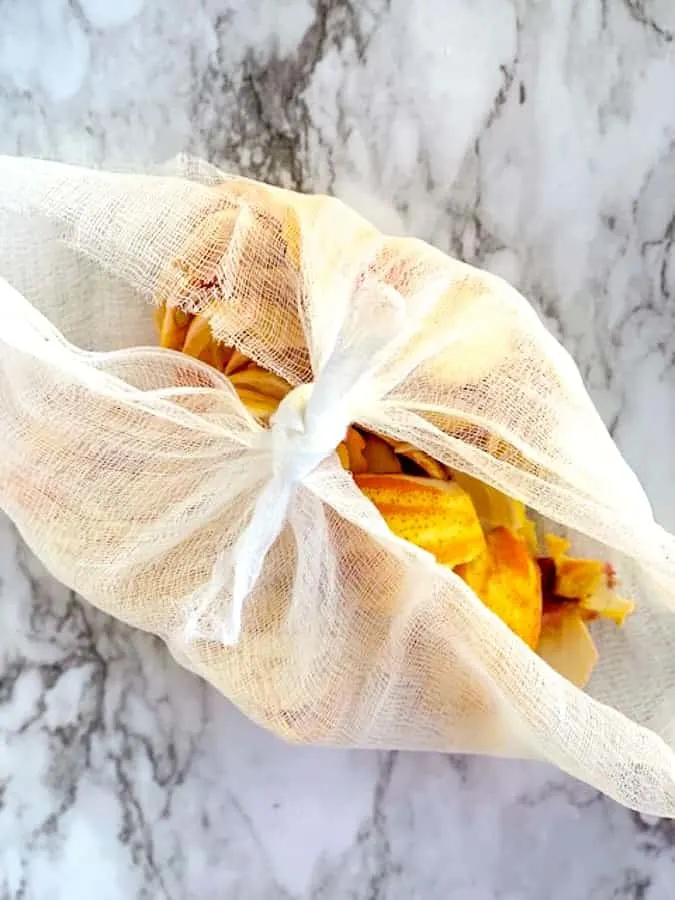
Let’s dive into step by step photos to help you through each step:
Separate the peel from the pith. The pith is the white, bitter layer under the peel.
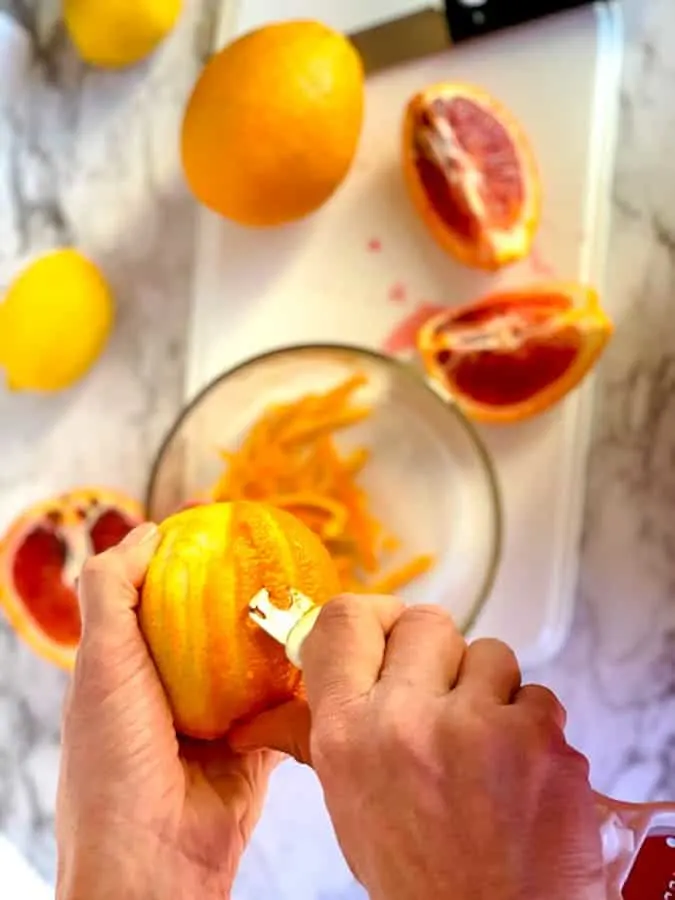
My favorite microplane citrus tool (affiliate link) does most of the work. My mother-in-law introduced me to this kitchen tool and I’ve used it again and again in recipes like lemon squares, lemon bundt cake, and orange spiced tea cookies.
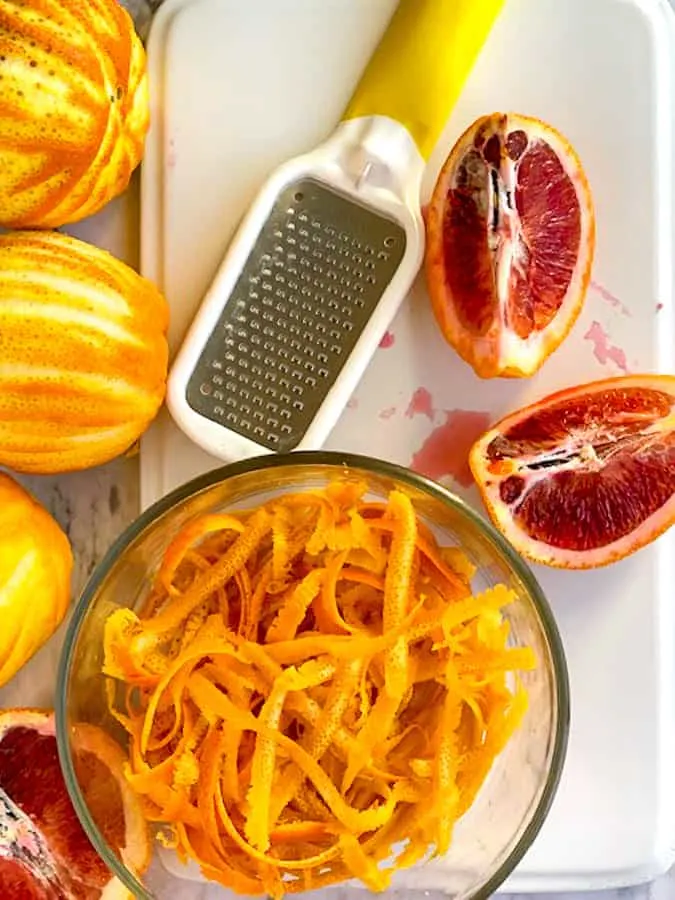
Now slice the fruit and remove the seeds. Take off the layer of pith if it is thick. Set it aside with the seeds. Wrap the seeds and pith in the cheesecloth and secure tightly.
Use a food processor to break down the blood oranges and lemons.
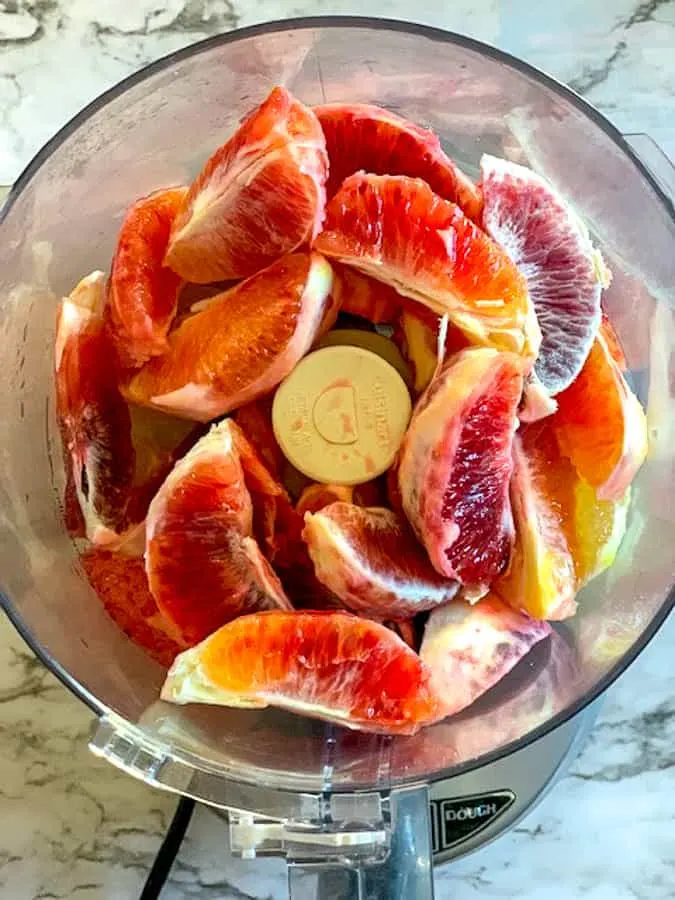
Pulse until the mixture is in small bits.
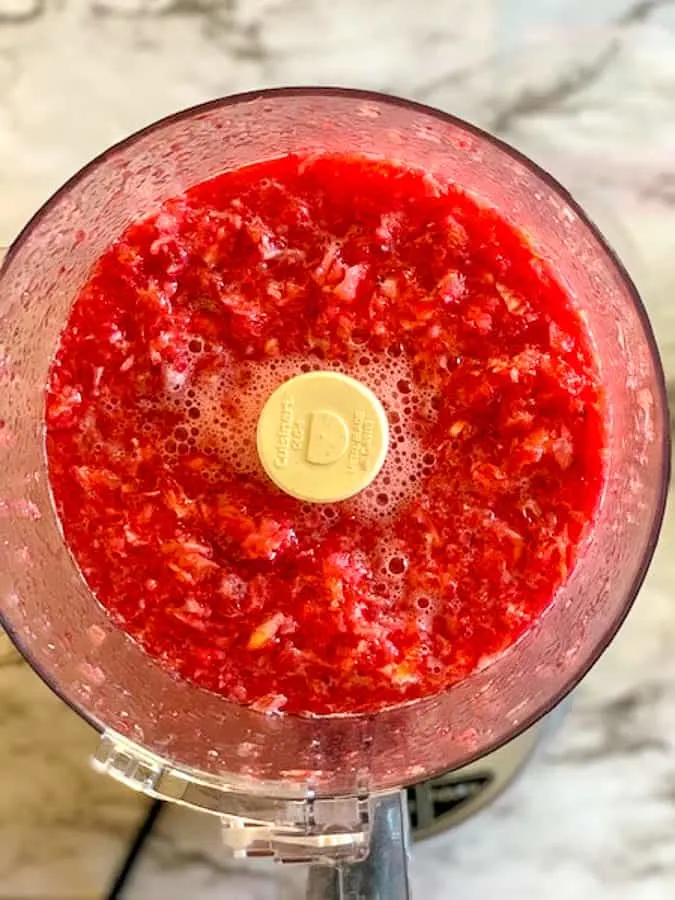
Place the water, all of the processed fruit, the peels, and the cheesecloth containing the pith and seeds into a large pot. Let this mixture sit overnight (not refrigerated).
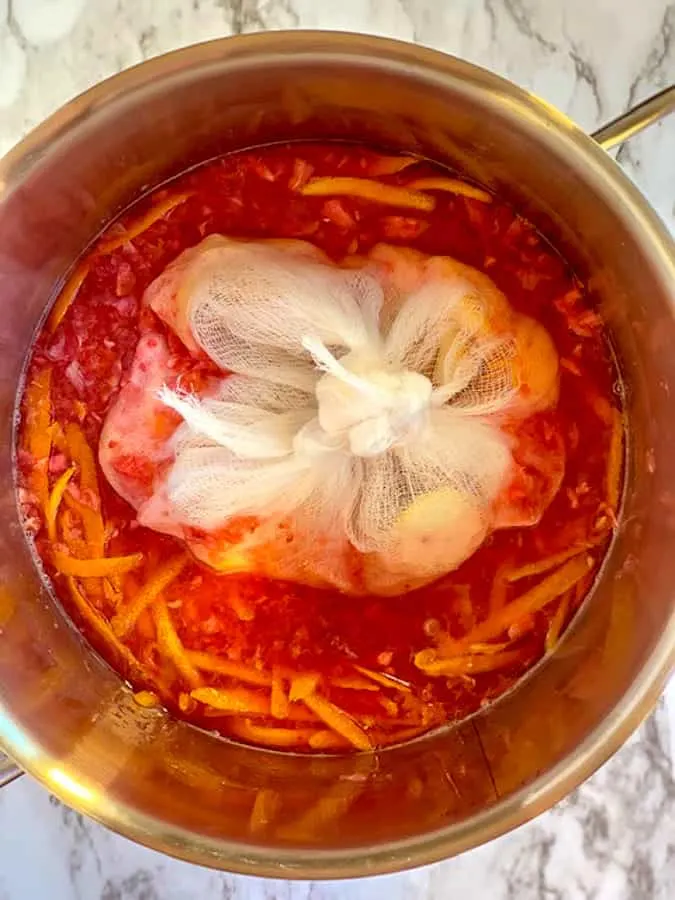
DAY TWO (60-90 minutes)
Bring the fruit mixture to a boil and cook for 20-30 minutes or until the peel is tender. Remove from the heat and discard the cheesecloth bundle.
This next steps may sound inconvenient but it’s the best way to find out how much sugar is needed.
Pour the marmalade mixture out of the hot sauce pan and into a large measuring glass. You’ll need to find out how much liquid and fruit bits you have in order to get the proportion correct for fruit to sugar.
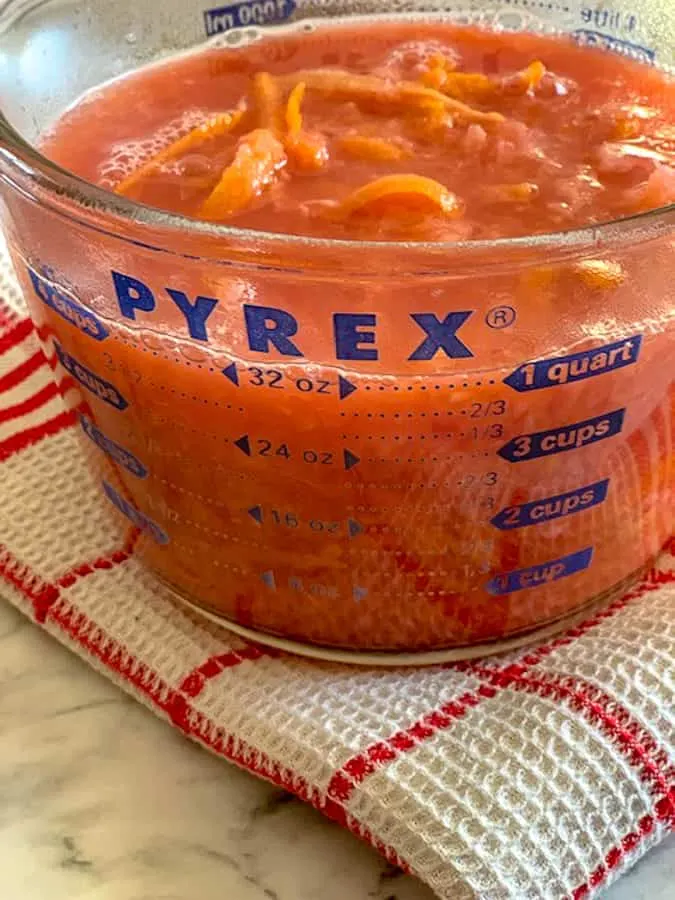
Add the sugar. Bring to a boil and stir until the sugar is dissolved. Cook the mixture until it reaches the gelling point.
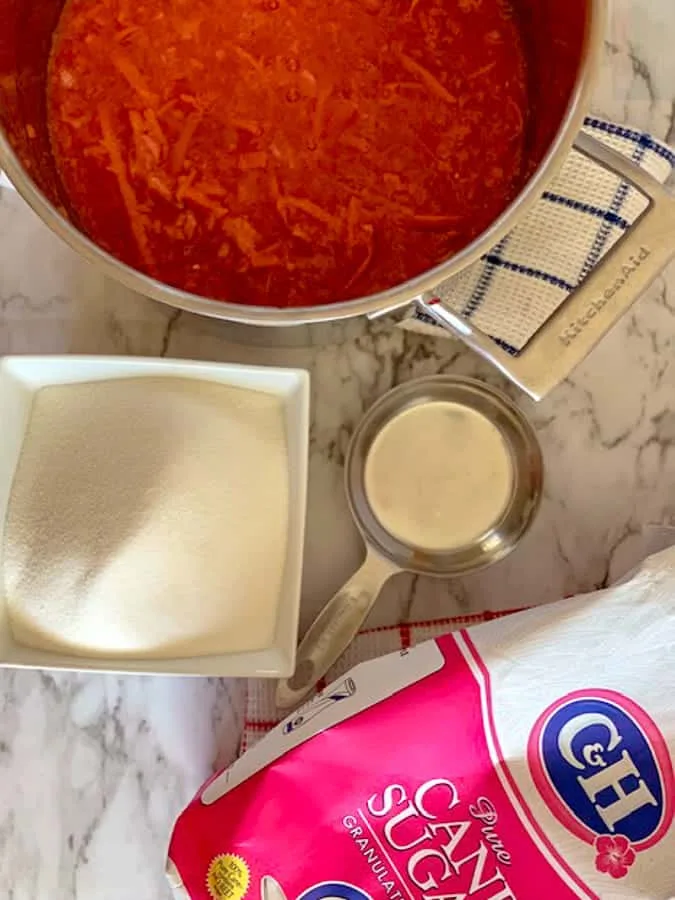
Ladle the hot marmalade into prepared jars, leaving 1/4 inch head space.
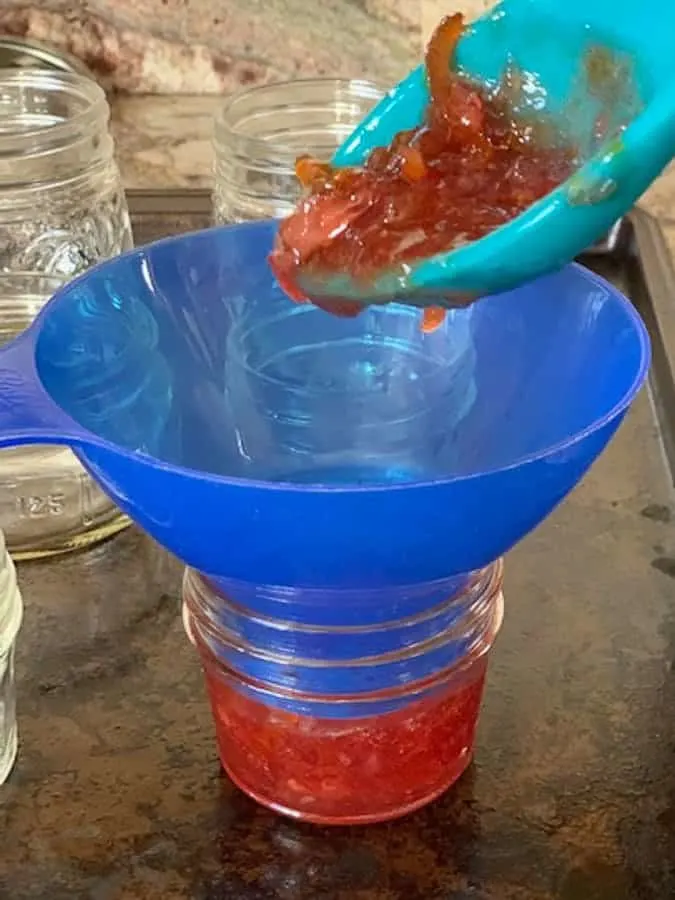
Add a label to your jar of blood orange marmalade!
Did you know that I have a FREE Printables library? I love sharing labels that you can download and print yourself. When you are making jams, jellies, and marmalades, it is so nice to add a personal touch.
Pin this recipe and label for later!
Do you plan on canning this marmalade so that it is shelf stable? Laura of A Beautiful Plate talks about canning and preserving and her experience at culinary school.
Expanding my canning and preserving is a goal this year and starting with How to Pickle Peppers from Melissa at Bless this Mess sounds like a great idea!
The Ball Book of Preserving may last me a lifetime. Every page has something I’d like to try. Doesn’t Rum Soaked Cherries with Boozy Cherry Molasses sound good? Rebecca from Foodie with Family modified a Ball canning recipe for her creation.
Baking with your homemade jams is another good idea. Try this recipe for orange marmalade scones.
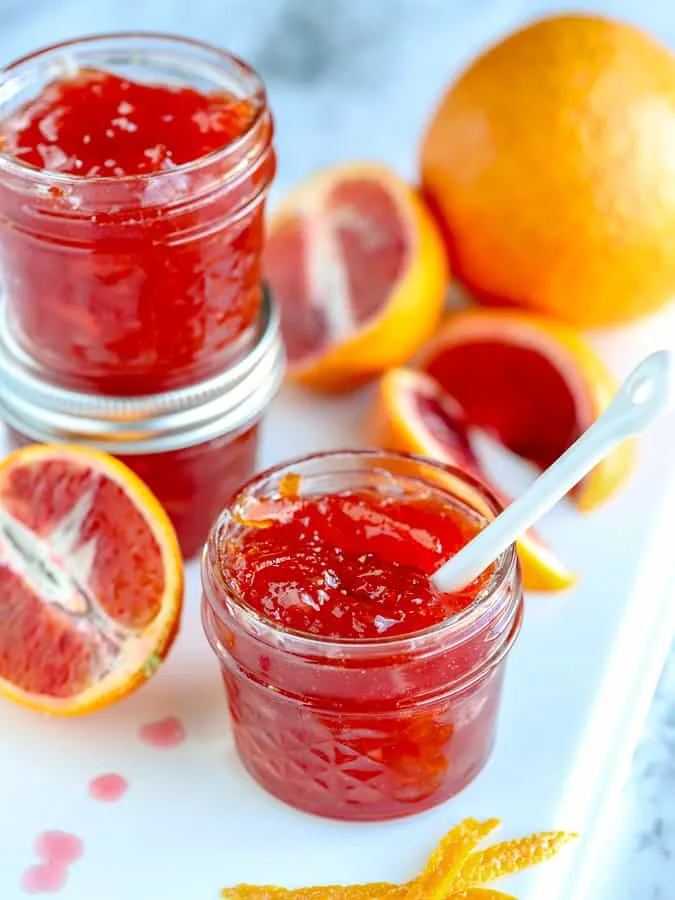
Blood Orange Marmalade
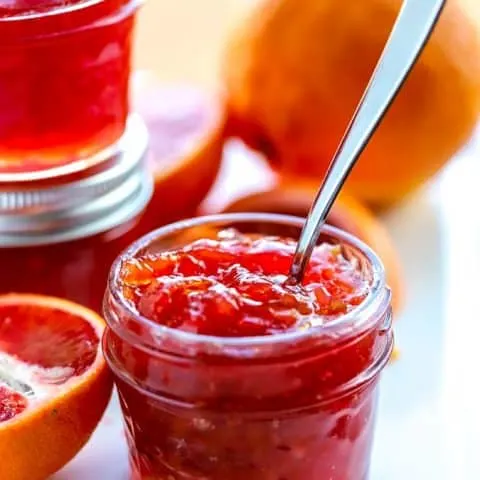
Make homemade blood orange marmalade to capture the bright citrus flavor and color of this gorgeous fruit! Preserving at home can be easy with this step by step process.
Ingredients
- 4 large blood oranges
- 2 lemons
- 1 quart water
- 3 cups Sugar (amount determined by amount of fruit mixture after initial steps)
Instructions
DAY ONE (about 30 minutes)
- First work on the peel: I use a carrot peeler to take a thin layer of peel off the blood oranges and lemons. You do not want the pith—the white layer just below the peel. The pith has pectin and will be used later but do your best to keep it separate from the peel. You should have about 2 cups of blood orange peel and 1 cups of lemon peel. Slice it thinly. Reserve any pith that has come off the fruit.
- Now slice the fruit and remove the seeds. Take off the layer of pith if it is thick. Set it aside with the seeds. Wrap the seeds and pith in the cheesecloth and secure tightly.
- Use a food processor to break down the oranges and lemons. Pulse until the mixture is in small bits. The fruit will continue to break down when you cook it and marmalade is often a chunky mixture.
- Place the water, all of the processed fruit, the peels, and the cheesecloth containing the pith and seeds into a large pot. Let this mixture sit overnight (not refrigerated). Note that you do not add the sugar until Day Two.
DAY TWO (60-90 minutes)
- Bring the fruit mixture to a boil and cook for 20-30 minutes or until the peel is tender. Remove from the heat and discard the cheesecloth bundle.
- Measure the fruit and liquid. Add 3/4 - 1 cup sugar for each cup of fruit mixture (yes, this will be a lot of sugar). Bring to a boil and stir until the sugar is dissolved. Continue stirring as the mixture comes to the gelling point. The mixture will thicken, keep stirring. Perform a gel-test to see if the marmalade is ready for canning. Take a tablespoon of the marmalade and place it in the freezer for a few minutes on a very cold plate. After a few minutes, if the marmalade wrinkles when you push it slightly then it has reached the gelling point.
- Ladle the hot marmalade into prepared jars, leaving 1/4 inch head space. Process in a boiling-water canner. Alternatively, place the marmalade in the refrigerator if you do not wish to preserve it in a canner.
Notes
The amount of sugar you'll need will depend on the ratio of fruit plus liquid to sugar. One cup to one cup is recommended. Here I decreased the ratio to 3/4 cup of sugar for each cup of liquid and the marmalade still came together very easily. If you use too little sugar you risk the marmalade not gelling and remaining in a liquid form.
Recommended Products
As an Amazon Associate and member of other affiliate programs, I earn from qualifying purchases.
Nutrition Information:
Yield:
20Serving Size:
1 tablespoonAmount Per Serving: Calories: 141Total Fat: 0gSaturated Fat: 0gTrans Fat: 0gUnsaturated Fat: 0gCholesterol: 0mgSodium: 3mgCarbohydrates: 37gFiber: 1gSugar: 34gProtein: 0g
This data is provided by Nutrionix and is an estimate only.
Kitchen tools you’ll need for this recipe:
Other Jam, Jelly and Preserves recipes you’ll enjoying making at home:
- Pear Butter
- Hot Pepper Jelly
- Orange Lemon Marmalade
- Spiced Pear and Apple Butter
- Cara Cara Orange Marmalade
- Crock Pot peach-mango butter
- Plum Jam
- Grape Jelly

Holly Baker started the food blog, A Baker’s House, in 2011. She is the writer, recipe creator, and photographer for the site. Holly loves to bake and shares recipes for gluten free food, canning recipes, as well as traditional desserts too. Her recipes and food photography have been highlighted by BuzzFeed, Reader’s Digest, and She Knows.

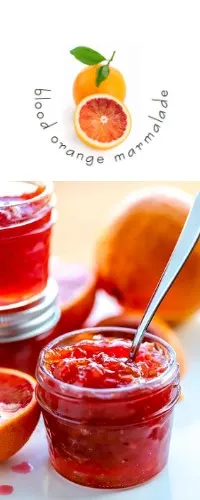
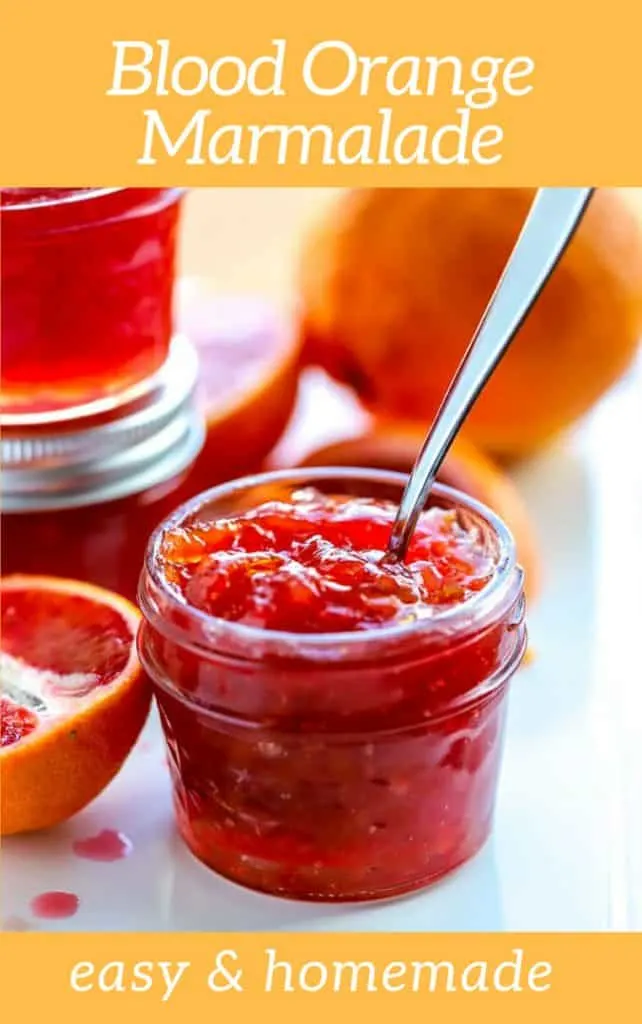
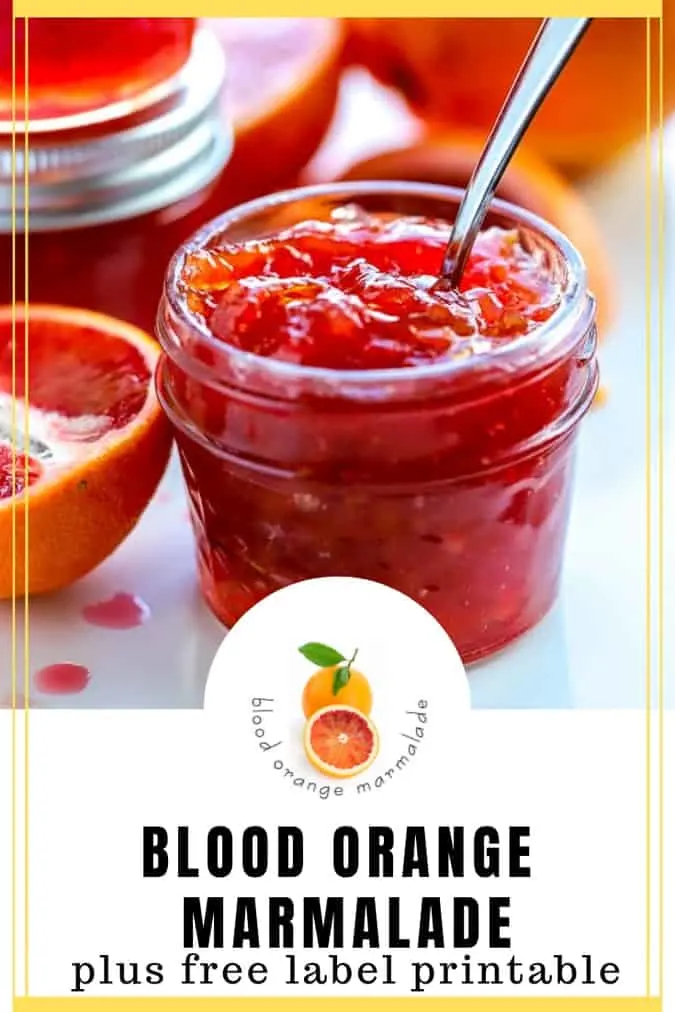

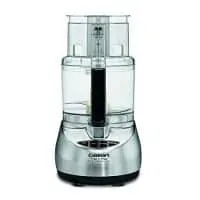
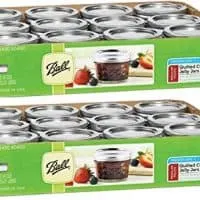
Francis W Wallbank
Wednesday 14th of July 2021
Just working on my second batch. I gave away some jars of my first batch and got comments like delicious and fantastic. A little of this treat is not enough.
Holly Baker
Sunday 5th of September 2021
Yay! SO glad to hear this.
Seanna Ellis
Saturday 20th of February 2021
How long is this supposed to take to get to gelling point??
Holly Baker
Tuesday 23rd of February 2021
It will depend on your altitude and the amount of liquid/juice/fruit you start with so it is hard to pinpoint a time.
Stella
Friday 12th of February 2021
Can I halve the recipe?
Holly Baker
Monday 15th of February 2021
Yes, you can make a smaller batch. Just watch the cooking times as you may need to adjust since you are not working with as much liquid.
P Wilimek
Wednesday 15th of April 2020
This is my second batch. The first one couldn’t have been better hope this one is the same.. Have been making blood orange marmalade for years and this is the best I’ve ever made.. thanks for the recipe.
Holly Baker
Thursday 16th of April 2020
I'm so happy to hear that your are enjoying this blood orange marmalade. Isn't the color beautiful!
Sophie Wilkins
Friday 30th of August 2019
Hi Holly
How long does this keep for? I would love to make some for little Christmas gifts! :)
Holly Baker
Friday 30th of August 2019
If you process the jars in a boiling water bath and store them in a cool, dry place, then the jars should keep for months. BUT as I do not know the acidity level of the marmalade I cannot assure you of how long the jars would keep. You'd have to keep an eye on any indication of spoilage such as bulging lids or leaking jars. Odors or mold are obvious signs of spoilage too.